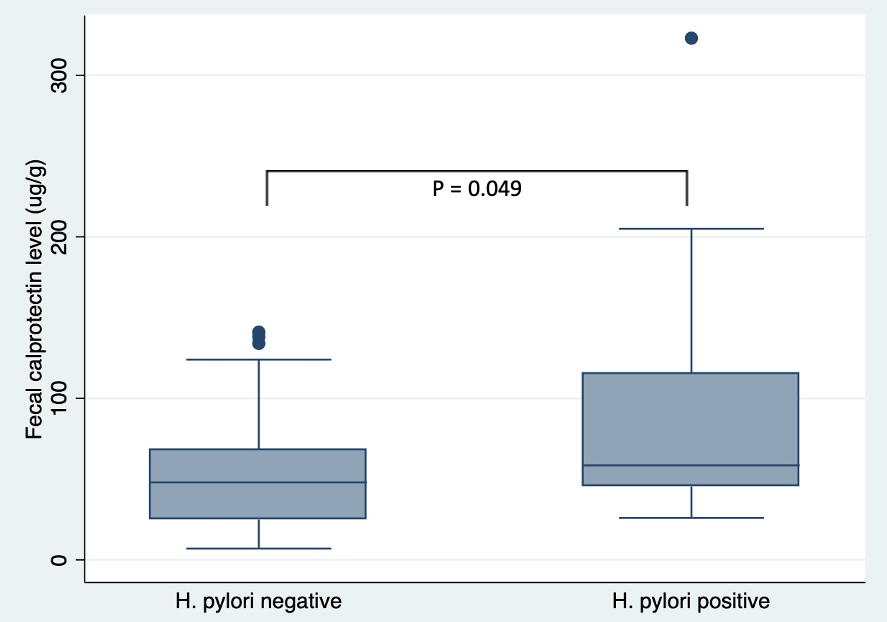Gastroenterology/Hepatology
Gastroenterology/Hepatology
61 - Relationship between fecal calprotectin and H. pylori infection in children
Publication Number: 61.215

Priscila E. Villalba-Davila, MD (she/her/hers)
Pediatric Resident PGY-3
State University of New York Downstate Medical Center College of Medicine
Brooklyn, New York, United States
Presenting Author(s)
Background:
Fecal calprotectin (FC) is a non-invasive inflammatory marker of intestinal pathologies. It is commonly used in the diagnosis and follow-up of inflammatory bowel diseases (IBD). However, elevation of FC can contribute to more invasive evaluations, and the literature is unclear as to the potential of other chronic diseases to drive this elevation. One possible contributor could be H. pylori infection, which can drive a neutrophilic response leading to elevated FC. Some international studies have suggested a linkage, although there is currently no data in the United States.
Objective:
To assess if there is any association between FC levels and H. pylori infection in children.
Design/Methods:
A single-center retrospective study was conducted in patients who underwent esophagogastroduodenoscopy (EGD) between January 2017 and October 2022. Patients aged 6-18 years old who had a FC level within 6 months prior to EGD and who were tested for H. Pylori infection were included. H. pylori diagnosis was made through stool antigen and/or histological findings. Patients with known IBD, celiac disease, or other intestinal conditions were excluded. Due to variations in FC levels in small children, children ≤5 years old were also excluded. Data analysis was performed using STATA 2015. Categorical data were analyzed using chi-square tests. Student's t-test was performed for normally distributed data, and Mann-Whitney U test was used for non-normally distributed data. Normality was assessed by Shapiro-Wilk test. A p-value ≤0.05 was considered statistically significant.
Results:
46 patients were captured. 16 (34.8%) patients tested positive for H. pylori and 30 (65.2%) tested negative. There were no statistically significant differences between the two groups with regards to age, sex, race, or BMI. The main initial complaint was abdominal pain (80.4%) followed by weight loss/poor weight gain (45.7%), and nausea/vomiting (39.1%). Mean FC level was significantly elevated in patients with H. pylori infection (95.1 ± 80.2) when compared to patients without H. pylori infection (56.3 ± 40.6) (p=0.049). The rest of the laboratory findings were not statistically significant between both groups.
Conclusion(s):
FC was significantly increased in pediatric patients ( >5 years old) with H. pylori infection. In patients with mildly elevated FC, H. pylori infection may be considered an adequate explanation if no other markers concerning for IBD are present. A larger study is indicated for conclusive support. .png)


